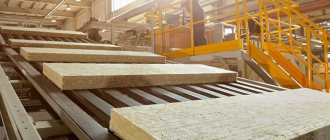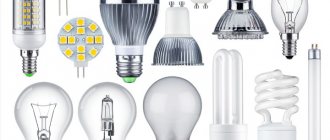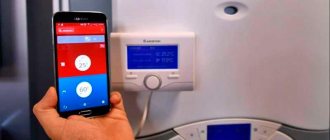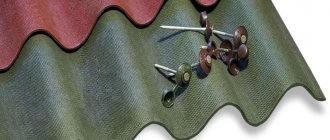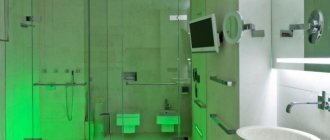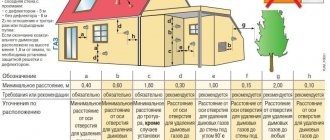The question of whether to install an RCD on a lighting circuit has recently remained relevant. Meanwhile, there are no strict regulations regarding the installation of RCDs on lighting lines. Let's see what an RCD can provide in this case, and how things will be without it. After which each reader will be able to make a conclusion for himself whether to install an RCD for lighting or not.
RCD for lighting
First, let's look at the regulatory documents. Let's look at the PUE:
In group networks feeding plug sockets, an RCD with a rated operating current of no more than 30 mA should be used. It is allowed to connect several group lines to one RCD through separate circuit breakers. Installation of RCDs in lines supplying stationary equipment and lamps, as well as in general lighting networks, is usually not required.
According to this paragraph, the installation of RCDs in lighting circuits can be neglected. Whoever does not install an RCD here is, in principle, not violating anything. But personally, we always recommend installing an RCD for lighting. Our opinion is that the preposition “not” before the word “required” should be removed from this paragraph of the PUE. This would be a safer electrical installation option.
Operating principle of RCD
First, let us recall the principle of operation of an RCD. A residual current transformer inside the RCD allows detection of excess differential current. If such an excess occurs, the protected electrical circuit will open. The RCD is connected to a break in the protected circuit - to a break in the neutral and linear conductors.
After the RCD is put into operation, the contact inside it is closed by the solenoid, held in this state, and the device freely passes the current feeding the circuit through itself. If everything works normally without leaks, then the neutral conductor current and the linear conductor current are equal to each other, they are directed oppositely, and their magnetic fluxes in the core of the differential transformer coil are mutually compensated - no EMF is induced, there is no reason for an emergency tripping of the RCD.
Operating principle of RCD
If a short circuit or leakage to ground now occurs, then the current of the linear conductor will be greater than the current of the neutral conductor - the magnetic fluxes in the core of the differential transformer will no longer be mutually compensated - an EMF will be induced in the secondary winding of the transformer. The tracking device inside the RCD will detect this, and the solenoid will immediately stop holding contact - the circuit in which the leak is detected will be opened by the action of the spring on the contact in a split second, and electric shock to a person will be nipped in the bud.
General requirements. Electricity supply
7.1.13. Electrical receivers must be powered from a 380/220 V network with a TN-S or TN-CS grounding system.
When reconstructing residential and public buildings with a network voltage of 220/127 V or 3 x 220 V, the network should be switched to a voltage of 380/220 V with a TN-S or TN-CS grounding system.
7.1.14. External power supply to buildings must meet the requirements of Chapter 1.2.
7.1.15. In dormitories of various institutions, in schools and other educational institutions, etc. the construction of built-in and attached substations is not allowed.
In residential buildings, in exceptional cases, it is allowed to place built-in and attached substations using dry-type transformers in agreement with state supervisory authorities, while sanitary requirements for limiting noise and vibration levels must be fully met in accordance with current standards.
The construction and placement of built-in, attached and free-standing substations must be carried out in accordance with the requirements of the chapters of Section. 4.
7.1.16. It is recommended that power and lighting electrical receivers be powered from the same transformers.
7.1.17. The location and layout of transformer substations must provide for the possibility of round-the-clock unhindered access to them for personnel of the energy supply organization.
7.1.18. Power supply for safety lighting and evacuation lighting must be carried out in accordance with the requirements of Chapter. 6.1 and 6.2, as well as SNiP 23-05-95 “Natural and artificial lighting”.
7.1.19. If there are elevators in the building, which are also intended for transporting fire departments, their power supply must be provided in accordance with the requirements of Chapter. 7.4.
7.1.20. Electrical networks of buildings must be designed to power advertising lighting, shop windows, facades, illumination, outdoor, fire-fighting devices, dispatch systems, local television networks, light indicators of fire hydrants, safety signs, bell and other alarms, light fencing lights, etc., in in accordance with the design specifications.
7.1.21. When supplying single-phase consumers of buildings from a multiphase distribution network, it is allowed for different groups of single-phase consumers to have common N and PE conductors (five-wire network) laid directly from the ASU; combining N and PE conductors (four-wire network with PEN conductor) is not allowed.
When supplying single-phase consumers from a multiphase supply network with branches from overhead lines, when the PEN conductor of the overhead line is common to groups of single-phase consumers powered from different phases, it is recommended to provide protective shutdown of consumers when the voltage exceeds the permissible limit, arising due to load asymmetry when the PEN breaks conductor. The disconnection must be carried out at the entrance to the building, for example, by influencing the independent release of the input circuit breaker using a maximum voltage relay, and both the phase (L) and neutral working (N) conductors must be disconnected.
When choosing devices and devices installed at the input, preference, other things being equal, should be given to devices and devices that remain operational when the voltage exceeds the permissible voltage, arising due to load asymmetry when the PEN or N conductor breaks, while their switching and other performance specifications may not be met.
In all cases, it is prohibited to have switching contact and non-contact elements in PE and PEN conductor circuits.
Connections that can be disassembled with a tool are allowed, as well as connectors specially designed for this purpose.
Conditional advantages of not installing an RCD on the lighting line
So, if you haven’t installed an RCD on the lighting line, then what will happen? There are at least two advantages.
- Firstly, you will save money on buying an RCD, because a model from a well-known, trusted brand is not cheap, and if you are going to buy an RCD, then buy a quality one.
- Secondly, you will not take up extra space inside the switchboard, because even a single-phase RCD takes up two whole modules on a DIN rail, and space in the switchboard is sometimes very scarce. Isn’t it better to use it more expediently (depending on your priorities and current tasks ).
Thus, if your budget, as well as the space inside the panel, is limited, then you don’t have to install an RCD for lighting.
Machine denomination
Table of ratings of circuit breakers
On the body of any device, the rated value is indicated - the value of the maximum continuous current that passes through the device without harm. This parameter is safe for current switching.
To ensure protection of the RCD itself, it is necessary to install a circuit breaker with a rating similar to or 1 more than the rating of the device. If you have a machine with a rating of 16 A, the RCD should be about 25 A. This current reserve will be enough to prevent the flow of energy when the load increases.
Obvious disadvantages of not installing an RCD on the lighting line
The disadvantages in this situation are much heavier than the advantages. Many modern lighting devices have electrically conductive housings or at least conductive parts of the housings. When assembling such a device, a person may not notice how the damaged insulation has exposed the wire, and it is already in contact with the housing somewhere inside the device.
What does this mean? The body of a lighting device (lantern, chandelier, lamp, sconce) may accidentally become energized, and when trying, for example, to screw in a light bulb or wipe dust on a lampshade, a person will be shocked by an electric shock.
The same is with cartridges: if a phase wire is connected to its external threaded part, and a neutral wire is connected to the internal contact, the danger of electric shock increases; it is more correct to connect the phase wire to the central contact of the cartridge. In any case, even when replacing a light bulb, there is a risk of injury if you accidentally touch the thread. If an RCD is installed, the person will be protected; if there is no RCD, a risk arises.
A similar situation may arise in the case of repairs. When drilling into a wall, you run the risk of accidentally hitting a phase wire with the drill. If there is no protection, then electric shock is possible, not to mention a short circuit. If you carefully install an RCD, the circuit will instantly de-energize, and you will have time to fix the problem.
What if the wiring gets wet or floods? Here the RCD will react ahead of the person to a dangerous situation - the wet, live area will be instantly de-energized, and the danger of electric shock will be prevented. What can we say about the bathroom, where high humidity is common? Here, protection of lighting lines by means of an RCD is extremely desirable.
Input devices, distribution boards, distribution points, group boards
7.1.22. A VU or ASU must be installed at the entrance to the building. One or more VU or ASU may be installed in a building.
If there are several economically separate consumers in a building, it is recommended that each of them install an independent VU or ASU.
The ASU is also allowed to supply power to consumers located in other buildings, provided that these consumers are functionally connected.
For branches from overhead lines with a rated current of up to 25 A, the VU or ASU may not be installed at the inputs to the building if the distance from the branch to the group panel, which in this case performs the functions of the VU, is no more than 3 m. This section of the network must be carried out with a flexible copper cable with with a conductor cross-section of at least 4 mm2, flame retardant, laid in a steel pipe, and the requirements for ensuring a reliable contact connection with the branch wires must be met.
For air input, surge suppressors must be installed.
7.1.23. Before entering buildings, it is not allowed to install additional cable boxes to separate the service scope of external supply networks and networks inside the building. Such separation must be carried out in the ASU or main switchboard.
7.1.24. VU, ASU, main switchboard must have protection devices on all inputs of supply lines and on all outgoing lines.
7.1.25. Control devices must be installed at the input of supply lines to the VU, ASU, and main switchboards. On outgoing lines, control devices can be installed either on each line, or be common to several lines.
A circuit breaker should be considered as a protection and control device.
7.1.26. Control devices, regardless of their presence at the beginning of the supply line, must be installed at the inputs of the supply lines in retail premises, utilities, administrative premises, etc., as well as in consumer premises that are administratively and economically isolated.
7.1.27. The floor panel must be installed at a distance of no more than 3 m along the length of the electrical wiring from the supply riser, taking into account the requirements of Chapter. 3.1.
7.1.28. VU, ASU, main switchboard, as a rule, should be installed in electrical switchboard rooms accessible only to maintenance personnel. In areas prone to flooding, they should be installed above the flood level.
VU, ASU, main switchboard can be located in rooms allocated in operational dry basements, provided that these rooms are accessible to maintenance personnel and are separated from other rooms by partitions with a fire resistance limit of at least 0.75 hours.
When placing VU, ASU, main switchboards, distribution points and group panels outside electrical switchboard rooms, they must be installed in places convenient and accessible for maintenance, in cabinets with an enclosure protection degree of at least IP31.
The distance from pipelines (water supply, heating, sewerage, internal drains), gas pipelines and gas meters to the installation site must be at least 1 m.
7.1.29. Electrical switchboard rooms, as well as VU, ASU, main switchboards, are not allowed to be located under toilets, bathrooms, showers, kitchens (except for apartment kitchens), sinks, washing and steam rooms of bathhouses and other rooms associated with wet technological processes, except in cases where Special measures have been taken for reliable waterproofing to prevent moisture from entering the premises where the switchgear is installed.
It is not recommended to lay pipelines (plumbing, heating) through electrical rooms.
Pipelines (plumbing, heating), ventilation and other ducts laid through electrical switchboard rooms should not have branches within the room (with the exception of a branch to the heating device of the switchboard room itself), as well as hatches, valves, flanges, valves, etc.
Laying gas and pipelines with flammable liquids, sewerage and internal drains through these premises is not permitted.
Doors to electrical rooms must open outward.
7.1.30. The premises in which ASUs and main switchboards are installed must have natural ventilation and electric lighting. The room temperature should not be lower than +5 oC.
7.1.31. Electrical circuits within the VU, ASU, main switchboard, distribution points, group panels should be made with wires with copper conductors.
Conclusion
So, as you already understand, the advantages of installing an RCD are much more beneficial than the advantages of not installing an RCD. By installing an RCD, spending money and time once, you receive a guarantee of protection from accidents and from electric shock to people. Thus, an RCD for lighting is definitely worth installing!
Additional information on this topic:
See also on this topic:
Connecting an RCD (residual current device)
In what cases should you install
The lighting requirements are set out in Chapter 6.1 of the PUE, and the need to install differential protection is stated in clauses 6.1.14, 6.1.16, 6.4.18, 6.1.49. There is also a recommendation in GOST R 50571.7.714-2014 clause 714.411.3.3.
It says that RCDs for lighting residential and public buildings are installed:
- In rooms with high humidity and fire hazards, as protection against electric shock, you need to use a reduced voltage of up to 50V to power stationary lighting.
- When powering light sources in the above rooms from 220V, it is imperative to install an RCD or isolation transformer.
- It must be installed on lamps whose lowest point is located at a height below 2-2.5 meters. These are the lights that you can accidentally touch from the floor. For your information, with the ceiling height in Khrushchev buildings being 2.5-2.7 meters, almost any chandelier will be located lower.
- It is necessary to install in the power supply circuit of lighting and illumination of billboards and signs.
- Architectural lighting.
- For outdoor lighting.
- Lighting of public places on the street (telephone booths, bus stops, route signs, etc.).
If you are renovating a house, then you should know that you definitely need to install an RCD on the lighting groups in the bathroom, bathroom, bathhouse or sauna, and other places with high humidity, such as the basement.
Causes of electrical fires
Causes of electrical fires may include:
- Heating of conductors (local or over an extended area) due to overload.
- Sparking at the site of poor electrical contact (in connections, at the terminals of electrical appliances and devices)
- Leakage from non-insulated sections of the circuit (in connection, branch and feed-through boxes, distribution boards, electrical devices).
- The burning of an electric arc in any part of the circuit caused by a short circuit current.
- Damage to cable insulation.
Damage to cable insulation can occur for the following reasons:
- Electrical - from overvoltage and overcurrent.
- Mechanical - impact, pressure, squeezing, bending, damage by a foreign body.
- Environmental influences - humidity, heat, radiation (ultraviolet), aging, chemical exposure.
The development of a short circuit from a leakage current, leading to a fire, occurs as follows:
- At the point of microdamage to the insulation, an extremely small point current begins to flow between energized conductors.
- Under the influence of humidity, pollution, and the penetration of dust over time, a conductive bridge is formed through which leakage current flows.
- As the insulation condition deteriorates, starting from a current value of approximately 1 mA, the conductive channel gradually becomes charred, a “carbon bridge” appears, and the current continuously increases.
- With a leakage current of 150 mA, which corresponds to a power of 33 W, there is a real danger of fire due to the heating of various flammable materials by the heat generated at the site of insulation damage.
Equipment selection criteria
Existing RCDs are divided into single-phase and three-phase. Only the first devices are used in everyday life. A single-phase line almost always goes to an apartment or a private house from the electrical panel. For this purpose, a differential switch is used with two terminals (input plus output), whereas three-phase analogues have four terminals for wires.
All RCDs are divided according to the type of leakage current into three groups: “A”, “B” and “AC”. For fire-fighting needs, you should take the “AC” option (only for alternating current), “A” and “B” are more expensive, as they are additionally designed to work with pulsating and rectified currents
Residual current devices are:
- electronic;
- electromechanical.
The former are more expensive, but less reliable. In almost all cases, it is best to take a fire protection RCD of the electromechanical class. This switch does not require external power. If the supply line breaks, the electronic analog stops working and monitors for insulation damage. Plus, during a power surge, its response time increases.
The two main criteria for choosing a fire RCD are the selectivity of the device (the ability to set a shutdown delay) and the high leakage current parameter (100–300 mA). If one of these conditions is not met, then the system of protective devices in the electrical panel will not work as expected.
A selective type RCD is marked on the body with the letter “S”; it is the one that needs to be installed as a fire protection element of the cascade (it switches off with a set time delay)
According to the standards, a fire protection RCD must differ at least three times in a larger direction from the downstream conventional one in:
- leakage current;
- response time.
If the difference in these parameters is less than three times, then when the downstream differential switch is triggered, the fire protection device will also react to disconnect the circuit. As a result, it will be more difficult to find out the cause of the shutdown, and all consumers in parallel lines that have no problems will be left without power.
Ideally, a cascade circuit of various RCDs should work so that when problems arise, only the device that is located closest to the location of the insulation breakdown reacts. In this situation, only the protected circuit is switched off. The rest remain under tension.
With the requirement of a high leakage current parameter, the situation is as follows. For conventional RCDs it is selected within the range of 10–40 milliamps. The operating electric current (maximum consumption by electrical appliances connected to the line) in this case reaches 16–40 A. For lighting and sockets with household appliances, this is quite enough.
However, in any electrical network there are natural leaks. In the project of an intra-apartment or intra-house energy system, they are specially calculated in order to correctly select the RCD. They should not exceed 1/3 of the leakage current of the selected differential switch for a particular line. Otherwise, the protective device will trigger falsely on a regular basis.
According to the rules, a fire protection RCD is installed immediately after the electric meter at the entrance to the house; it sums up the natural electrical leakages from all household appliances connected to the home
If the protective device is selected, as for the usual case, at 10–40 mA, then the power supply will be permanently disconnected. In fact, the RCD will continuously detect leaks, triggering a power shutdown in all power supply lines of the house.
Safety switch installation diagrams
The RCD is not designed to monitor overloads in the electrical network, so it must be installed together with a standard “machine” - a circuit breaker. This way the protection will be complete in all problematic areas.
The standard diagram for connecting protective devices in an electrical panel is as follows:
- The first machine at the entrance is a machine.
- Then an electricity meter is installed.
- Then a fire protection RCD is connected (100–300 mA).
- Afterwards, the circuit is divided into several separate consumption lines with an RCD against electric shock (10–40 mA).
In some schemes, the first circuit breaker is replaced with a packet switch, and less powerful circuit breakers are then installed on consumer lines. This option also does not contradict the rules.
Image gallery
Photo from
General diagram for connecting a single-phase RCD
Differences between fire and conventional RCDs
Differential current switch and automatic circuit breaker
Installation of protective devices in different electrical networks
When connecting wires, it is important to ensure that the outputs from the RCD are not combined at a common zero and do not intersect anywhere with other neutral conductors or the panel body. After this protective device, the line should immediately go to another RCD or circuit breaker, and then directly to consumers.
After installation is completed, it is necessary to check the correct assembly of the entire circuit and the functionality of the protective device.
First, some equipment is plugged into the outlet to create a load in the network and voltage is applied. If everything is correct and the insulation is intact everywhere, then no RCD trips should occur
Then the differential switch itself is checked. To do this, most RCDs have a “T” (“TEST”) button. When it is pressed, the calculated leakage current is simulated, as a result of which the protection should operate normally. Moreover, testing should work regardless of whether there is a load or not.
If when you press “TEST” the RCD does not disconnect the line, then it is faulty. It is possible that the leakage simulation circuit is broken. In this case, the protection device will continue to perform its functions as intended. However, even such a switch is better to be replaced immediately. It is recommended to carry out such a check once a month.
